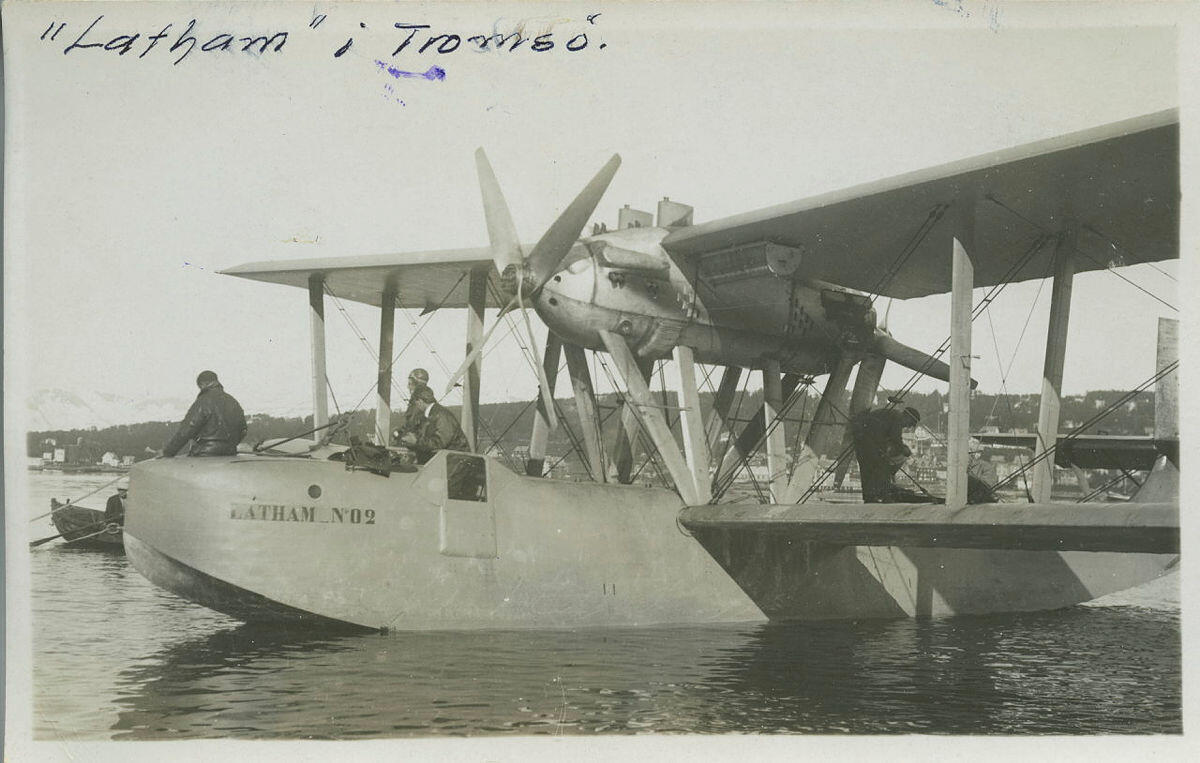Umberto Nobile designed the airship ‘Norge’ for Roald Amundsen. It arrived in Ny-Ålesund 7 May 1926, and passed over the North Pole a few days later. Thereafter, it continued to Alaska and landed in the town of Teller. The journey itself was uneventful. All the drama lay in the tension between Amundsen and Nobile. Amundsen’s reluctance to share the honour with Nobile prompted the Italian to plan another airship voyage to the Arctic. On 23 May 1928 the airship ‘Italia’ departed from Ny-Ålesund. The Pole was reached this time, too, but the homeward journey was a tragedy. The airship crashed on the sea ice; one mechanic was killed and radio contact was lost. This triggered a huge rescue operation involving 23 aircraft and 20 ships from seven countries. Nobile was rescued from the ice by the Swedish aviator Lundborg; the Soviet icebreaker ‘Krassin’ rescued seven more members of the expedition. The last seven were never found.
The search also claimed lives. Roald Amundsen and five others boarded a French ‘Latham’ aircraft and set off from Tromsø to Svalbard to participate in the search. On 18 June 1928, they disappeared without a trace.
The 23 aircraft, 20 ships, and 2 dogsled teams that participated in rescue operations around Svalbard in 1928:
Denmark:
Expedition sailing ship Gustav Holm from Kgl Grønlandske Handel.
Finland:
Pontoon/skiplane Junkers F13 ‘Turku’ K-SALG (from Aero OY) / Lihr
France:
Flying boat Latham 47 ‘02’ (from the French Navy) / René Guilbaud
Two small flying boats of the Schreck class (on board Strasbourg)
Cruiser Strasbourg, oil supply ship Durance, fishery surveillance ship Quentin Roosevelt and expedition sailing ship Pourquoi Pas?
Italy:
Flying boat Savoia-Marchetti S.55 I-SAAT ‘Santa Maria’ (Italian air force) / Maddalena
Flying boat Do15 Dornier Wal ‘Marina II’ I-PLIF (Italian air force) / Penzo
Flying boat Do15 Dornier Wal ‘Marina I’ I-XAAF (Italian air force) / Ravazzoni
(‘Marina I’ operated exclusively from its base in Tromsø).
Two small flying boats of the Macchi M-18 class, stationed one each on Citta di Milano and Braganza / Penzo and Crosio.
Cable-laying ship Citta di Milano and the two sealing vessels Hobby and Braganza
The trappers Waldemar Kræmer and four mountain soldiers searched along the west coast of Spitsbergen with small boat. Dogsled teams driven by the Italian mountain captain Sora, the Dutchman van Dongen and the Dane Ludvig Varming searched along the coast of Nordaustlandet. Sora and van Dongen made it all the way to Foynøya and Brochøya.
Norway:
Floatplane Hansa Brandenburg W33 ‘F.36’ / Lützow-Holm
Floatplane Hansa Brandenburg W33 ‘F.38’ / Riiser-Larsen
Floatplane Sopwith Baby ‘F-100’ / Lambrecht (on board Tordenskjold)
Floatplane Sopwith Baby ‘F-102’ / Ingebrigtsen (on board Tordenskjold)
and the battleship Tordenskjold, the sealing vessels Hobby (used three times, see Italy and USA), Braganza, Veslekari (Tryggve Gran), Heimland, fishery surveillance ship Michael Sars, Sysselmannen’s Svalbard, and the mine manager’s boat (name unknown). A dogsled team driven by trapper Hilmar Nøis and Rolf S Tandberg was partially guided by the two Italian students Albertini and Matteoda.
Soviet Union:
Pontoon/skiplane Junkers G 23 ‘Røde Bjørn’ / Tschuchnowski
Floatplane Junkers F 13 RR-DAS / Babuschkin (on board Malygin)
Pontoon or skiplane Junkers F 13 RR-??? (on board Sedov) was never used
Icebreakers Krassin, Malygin, and Sedov and the sailing ship Persej.
Sweden:
Floatplane Hansa Brandenburg (Heinkel He5) ‘255’ / Tornberg
Floatplane Hansa Brandenburg (Heinkel He5) ‘257’ / Jacobsson
Skiplane Fokker C.V.M. ‘31’ / Einar Lundborg
Skiplane Fokker C.V.M. ‘32’ / was never used
Pontoon/skiplane de Hvailland 60 Moth S-AABN / Schyberg
Skiplane Klemm-Daimler L.20 D-1357 / Ekman
Floatplane Junkers G 24 ‘Uppland’ S-AABG (from ABA) / Viktor Nilsson.
Sealing vessel Quest and the freighter Tanja.
USA:
The sealing vessel Hobby with ‘F.36’ and ‘F.38’ / Lützow-Holm and Riiser-Larsen





